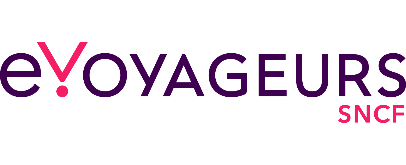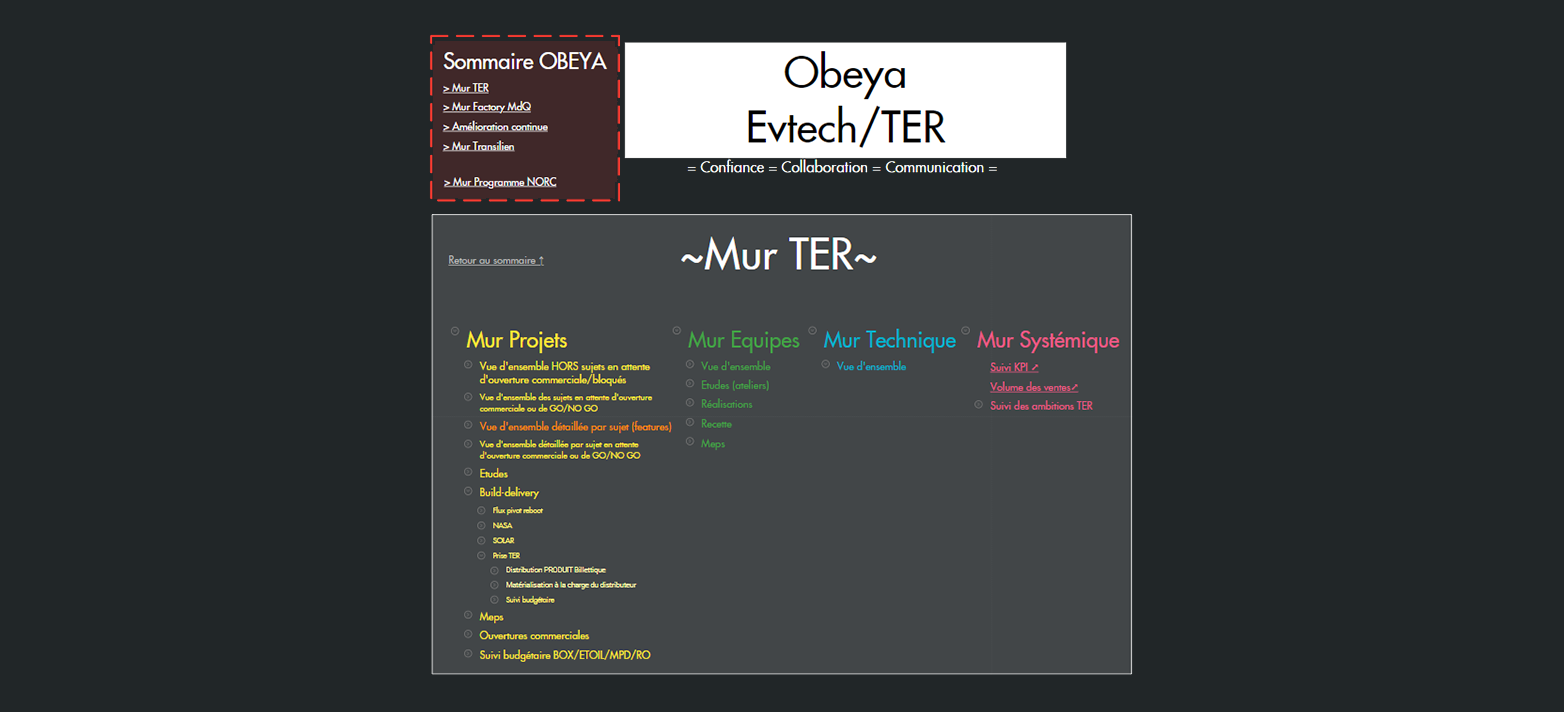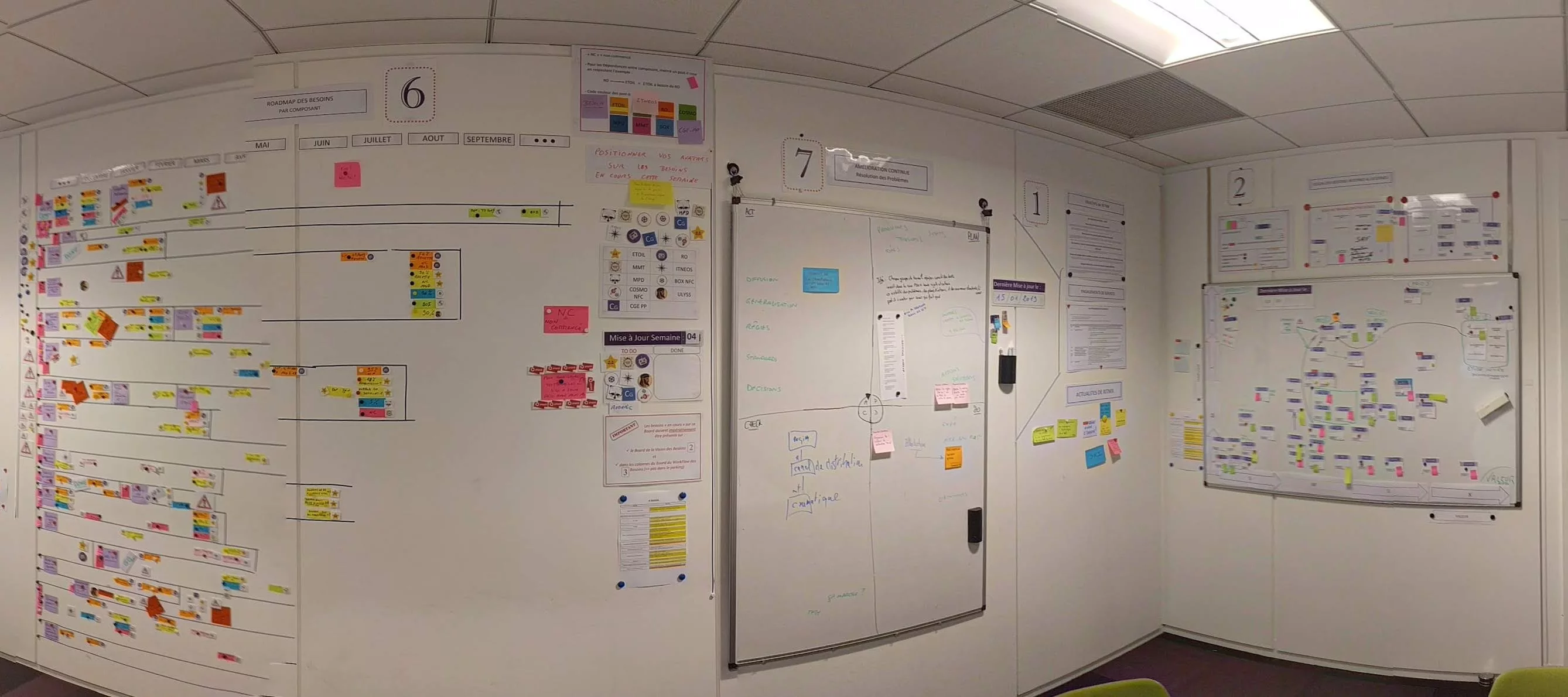
Reduce Time-to-Market
with the Obeya Method
-

Mohamed MOUSSA Scrum Master and Agile Coach
at e.Voyageurs SNCF


Mohamed MOUSSA
Scrum Master and Agile Coach
at e.Voyageurs SNCF

e.Voyageurs SNCF, a subsidiary of the French state-run rail network, is a team of roughly 1,500 employees—of which 1,000 are tech experts—responsible for guiding the SNCF group’s digital initiatives. Its primary mission is to make it easier for customers to access SNCF services by making incremental improvements to the digital customer journey.
The upcoming launch of “SNCF Connect,” a flagship project of e.Voyageurs SNCF, will soon unify all the group’s mobility services under a single interface. This includes services for SNCF: TGV INOUI, OUIGO, Intercités, TER, Thalys, Eurostar, TGV Lyria, and public transport in the Ile-de-France region (i.e. Transilien, long-distance buses, and carpooling)—as well as other sustainable or shared mobility options (i.e. bikes, scooters, boats, shuttles, trams, taxis, VTC, etc.).
Agile collaboration across all of these SNCF business units has been essential for making this initiative come to fruition. In fact, this has been the key focus for Mohamed Moussa, Scrum Master and Agile Coach for the SNCF Digital Factory—the person who is ultimately responsible for ensuring the successful follow-through of all Factory-related activities.

In the past, collaborating with “internal customers”— business units like TER and Transilien—looked something like this:
This required different stakeholders—dispersed across different business units and various office locations—to be involved at each stage of a given project’s lifecycle. As a result, each stakeholder typically had different sources of information to rely on to guide the decision-making and approval process. “A project could easily take months to complete,” Mohamed explained. “Each stakeholder involved would sometimes have to wait for others to complete their part of the process” before the work could advance. This made it incredibly difficult to develop and implement digital solutions in a truly effective, Agile way.
These operational difficulties gave Mohamed the idea of establishing a virtual Obeya room to centralize information across all stakeholders: “I knew I needed to establish a single source of information to create shared understanding around key project-related issues.”

As a starting point, Mohamed had to take stock of all of the information swirling around in order to justify using the Obeya method. Then it was a matter of identifying all of the individual stakeholders who would be involved in carrying out the project in any capacity.
He ultimately identified two primary types of stakeholders: 1) the “actors,” who were directly involved in building the solutions and 2) the “spectators,” who were brought into the process for consultative purposes to drive decision-making.
“I wanted to break down silos, eliminate intermediaries, and avoid duplicative work,” underscored Mohamed. “The Obeya method allows you to know what’s happening at each stage of a project, offering both macro and detailed views of a project’s status based on the level of information needed by different project stakeholders.” To facilitate this, Mohamed got approval to use the Jira Roadmunk add-on to visualize project data in Jira as a roadmap.
And because these project teams are often dispersed across multiple locations, Mohamed had the extra challenge of replicating the more typical Obeya experience in the physical world to work effectively in the digital world as well. To do this, he created a virtual Obeya room in Draft.io made up of four walls to both keep track of communications across different business units and also to better manage his internal team’s work:
This gave all teams a single “source of truth” for accessing project roadmaps all in one place, whether they were developed by project management or development teams.
To make this effective and useful for all involved, Mohamed emphasized the importance of making the virtual Obeya room easy to navigate: “Team members must be able to ‘walk’ from wall to wall to find the information they need easily.” The big benefit here is that it was no longer necessary to create Jira accounts for each “actor” involved in the process. All information—updated in real-time—was readily accessible to everyone at all times. “Effective visual management will help us identify and avoid future pitfalls,” expressed Mohamed.
From within the virtual Obeya room, all project stakeholders can access the roadmaps and other shared documents for every aspect of a given project—from start to finish. “Everyone has access to the relevant level of information upstream to anticipate needs better and adjust resources accordingly,” added Mohamed. “In other words, the virtual Obeya has helped to reduce our time-to-market significantly.”
Even if the virtual Obeya is now being used to support all of the SNCF Digital Factory’s strategic meetings, Mohamed would like to take it even further, with the end goal being the integration of all business units into the Agile development process. And while there’s still some work to do before this will be possible, visual project management—in the form of the virtual Obeya room—is getting him one step closer to achieving this goal.
Mohamed is also interested in gleaning more insights from the virtual Obeya room to have a clearer understanding of who’s visiting it, what they are visiting it for, and what other features might be valuable to improve the walls themselves and also support the needs of teams and stakeholders who are less inclined to change their work habits (to Agile).
Finally, in addition to using Draft.io for facilitating workshops for designing and refining project needs, impact mapping, user story mapping, and retrospectives, the creation of the virtual Obeya room is yet another way Draft.io continues to support the SNCF Digital Factory team in running its projects more effectively.